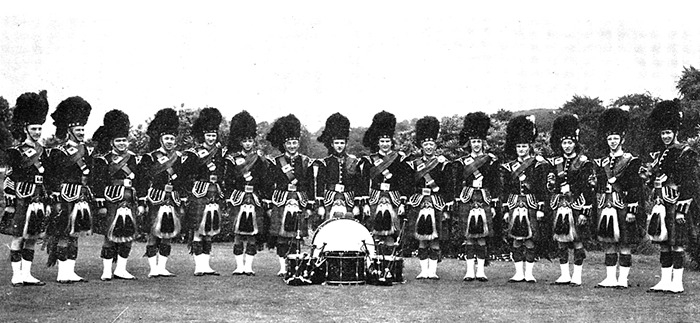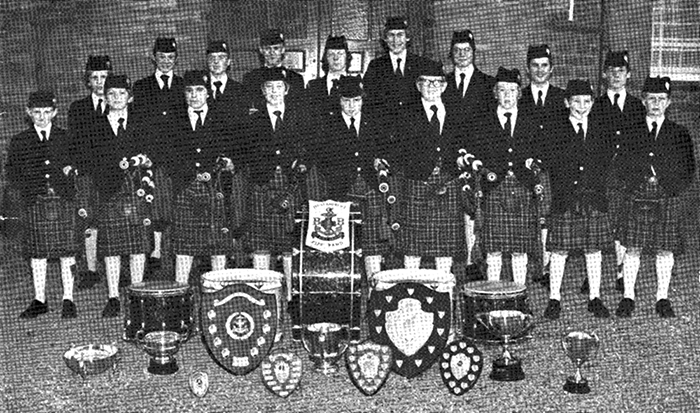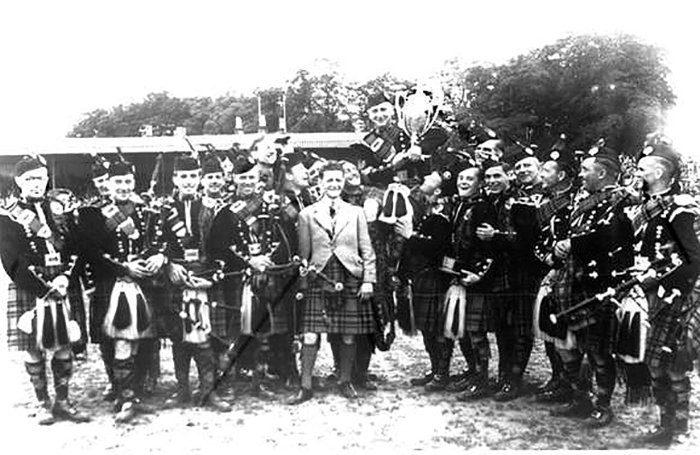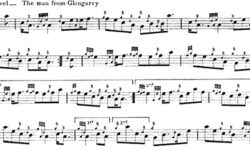
The decline of the coal mining industry in Scotland between the late 1950s and 1980s resulted in the loss of most of the former colliery bands, a mainstay of competitions during their existence.
This had a significant affect on the East of Scotland which had had many colliery bands in the Lothians and Fife. Pictured above in 1974 are the former Grade 1 band, Polkemmet Colliery.

By Alistair Aitken OBE
To that problem we can add the gradual decline in Boy’s Brigade and Ladies pipe bands, the former in particular. Many players in top bands learned their craft in the BB and dozens of others filled the ranks of senior bands when they were too old for Juvenile.
In 1913 there were 132 Boy’s Brigade pipe bands. The first three RSPBA Major Championships in 2023 had no entries from BB bands.

The amalgamation of the eight Scottish Police Forces in 2013 to create Police Scotland resulted in the loss of some of the pipe bands of the former Forces. Some have survived in a different format or name but the bands known as Lothian and Borders Police; Dumfries & Galloway Constabulary; Central Scotland Police; and Tayside Police have disappeared completely.
Over the past 20-30 years top pipe bands have gradually doubled in size. As a result many players now progress more quickly to these bands whereas previously they would have progressed upwards through the grades. This has contributed to the loss of some lower grade bands.
From January 2020 the COVID-19 pandemic and its subsequent lockdown contributed to the demise of some pipe bands or at least placed many on hold due to loss of players, lack of practice and financial issues.
On a more positive note we saw the introduction of pipe band medley competition and ensemble adjudication in 1970. This added a new musical dimension to competitions and gave a boost to bands in the east in Scotland, and at all levels, and throughout the country. Previously tunes such as hornpipes and jigs in particular had been the domain of primarily the top pipe bands in recordings etc.
Champion Bands from the East
Now a look at Grade 1 East of Scotland bands which have won the World Championship, either at Cowal Games in Dunoon from 1906, or since the formation of the SPBA in 1930, are as follows:
Edinburgh City Police (1919, 1950, 1954, 1963, 1964, 1971, 1972 and 1975 – the latter the same band but known as Lothian & Borders Police after regionalisation in Scotland earlier that year)
Millhall Scout Pipe Band, Stirling (1924, 1926 and 1930)

Bowhill Colliery, Fife (1947)
Muirhead & Sons, Grangemouth (1955, 1956, 1961, 1965, 1966, 1967, 1968 and 1969)
Dysart & Dundonald, Fife (1977 and 1978)
Boghall & Bathgate (2023)
Ten East of Scotland pipe bands competed at the first SPBA competition at Forthbank Park, Stirling, in 1932. The competition comprised Grade 2 pipe bands only and involved only 15 bands in total. The ten bands were: Scottish Motor Traction Co, Edinburgh; Denny & Dunipace Ex-Service; Forth Valley; Lochgelly Public; Mar Pipe Band (which I assume was from Aberdeenshire); Barry Ostlere & Shepherd; Bowhill Colliery; Michael Colliery; Dunfermline City; and Lochore & Crosshill Public.
Fifteen years later the following East of Scotland pipe bands were involved in the Open Grade at the first World Pipe Band Championships run under the auspices of the SPBA at Murrayfield Stadium, Edinburgh in 1947: Bowhill Colliery (the winner); Pumpherston; Michael Colliery; Edinburgh Corporation Transport; Lowland Brigade Training Centre; Edinburgh Special Constabulary; Edinburgh City Police; Highland Brigade Training Centre; Newtongrange Lothian; Muirhead & Sons; MacLeod (Dundee); MacKenzie (Dundee); Lochore & Crosshill; and City of Dundee.
East of Scotland pipe bands in lower grades which competed at the 1947 Worlds were: Ormiston; Tayside; Kirkcaldy & District; Broughty Ferry; Borthwick & District; Camelon; Edinburgh Special Constabulary; Newtongrange Juveniles; Forfar Burgh; Kelty & Blairadam; Cupar & District; Cowdenbeath Public; West Calder & District; Glencraig Colliery; Colinton & Currie; Kinglassie & District; Leith Dockers; Mechan’s Ltd; MacLeod (Dundee); MacKenzie (Dundee); Lochore & Crosshill; Newbattle Colliery; Lochgelly Ladies; Bowhill Colliery Juveniles; Rosyth; Falkirk & District; Lothian Ladies; 1st Cupar Boy’s Brigade; Hawick Boy’s Brigade; Braemar Girls; and 47th (Edinburgh) St Brides Boy’s Brigade
- To be continued.





















A very good article on our history, Alistair. From conversations I recall from my youth, I believe that the Mar Pipe Band was from Alloa, Clackmannanshire. The Earls of Mar and Kellie are linked with that county.
Championship Bands from the East…..Stirling, Hawick, Bathgate and Falkirk…..since when have the above been east of Scotland? Somebody should proof read this before it is published.
A interesting historical analysis by Alistair. The Edinburgh Police PB under PM Iain McLeod was a real powerhouse of a band in the early 70s. What many readers will be unaware of is that PM McLeod was an early pioneer of “drone tuning while the band is playing”. In those days however, there were no tuning meters in existence (or even dreamt of) and PM McLeod used his keen musical ear to go round the band, piper by piper, and fine tune each set of drones while the whole band was playing. It may have been scenes like this that inspired future inventors of the need for an electronic device that would do the same.